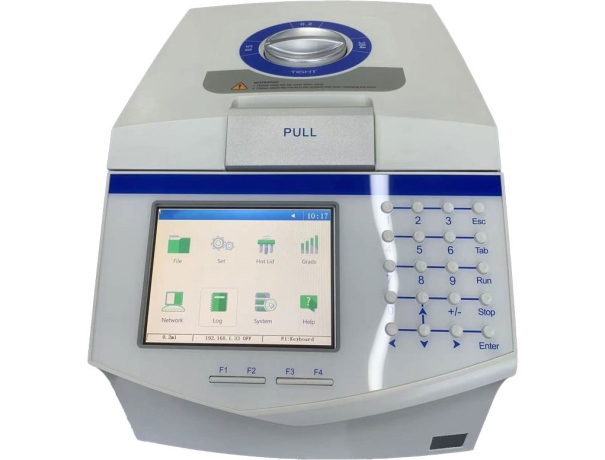Polymerase Chain Reaction (PCR) is a fundamental technique in molecular biology, widely used for amplifying DNA. Choosing the right PCR thermal cycler for your laboratory is crucial for obtaining accurate and reproducible results. With a plethora of options available in the market, it's essential to consider specific features and specifications to meet the unique needs of your research. In this article, we will explore the key factors to consider when selecting a PCR thermal cycler.
Temperature Range and Uniformity of PCR Thermal Cycler :
- The ability to maintain precise and uniform temperatures throughout the reaction is critical for the success of PCR. Look for a thermal cycler that offers a wide temperature range, typically from 4°C to 99°C, and high temperature uniformity across all wells.
Number of Reaction Wells:
- Choose a thermal cycler that meets the throughput requirements of your laboratory. Instruments come with different capacities, ranging from small benchtop models with 16 wells to high-throughput systems with 384 wells or more. Select a cycler that matches the scale of your experiments.
Gradient Functionality:
- Gradient PCR allows simultaneous testing of multiple annealing temperatures within a single run. This feature is beneficial for optimizing PCR conditions and is particularly useful when working with a new primer pair or under varying experimental conditions.
Ramp Rate:
- The ramp rate refers to how quickly the thermal cycler can change temperatures. A faster ramp rate can significantly reduce the overall PCR run time. Choose a thermal cycler with an adjustable ramp rate to accommodate different reaction requirements.
User Interface and Programming:
- A user-friendly interface simplifies the programming of PCR thermal cyclers protocols. Look for a thermal cycler with an intuitive touch screen or software interface that allows easy customization of temperature profiles, cycling times, and other parameters.
Data Connectivity and Analysis Software:
- Seamless data transfer and analysis are crucial for tracking and interpreting PCR results. Select a thermal cycler that offers USB ports, Ethernet connectivity, or wireless capabilities. Additionally, ensure that the accompanying software provides robust data analysis tools.
Heated Lid and Uniform Pressure:
- A heated lid helps prevent condensation on the PCR tube lids, ensuring uniformity across wells. Some models also offer adjustable lid pressure, accommodating different tube types and sizes for optimal thermal contact.
Sample Block Compatibility:
- Check the compatibility of the thermal cycler with various sample block formats. Interchangeable blocks allow flexibility in accommodating different PCR tube sizes or even 96-well or 384-well plates.
